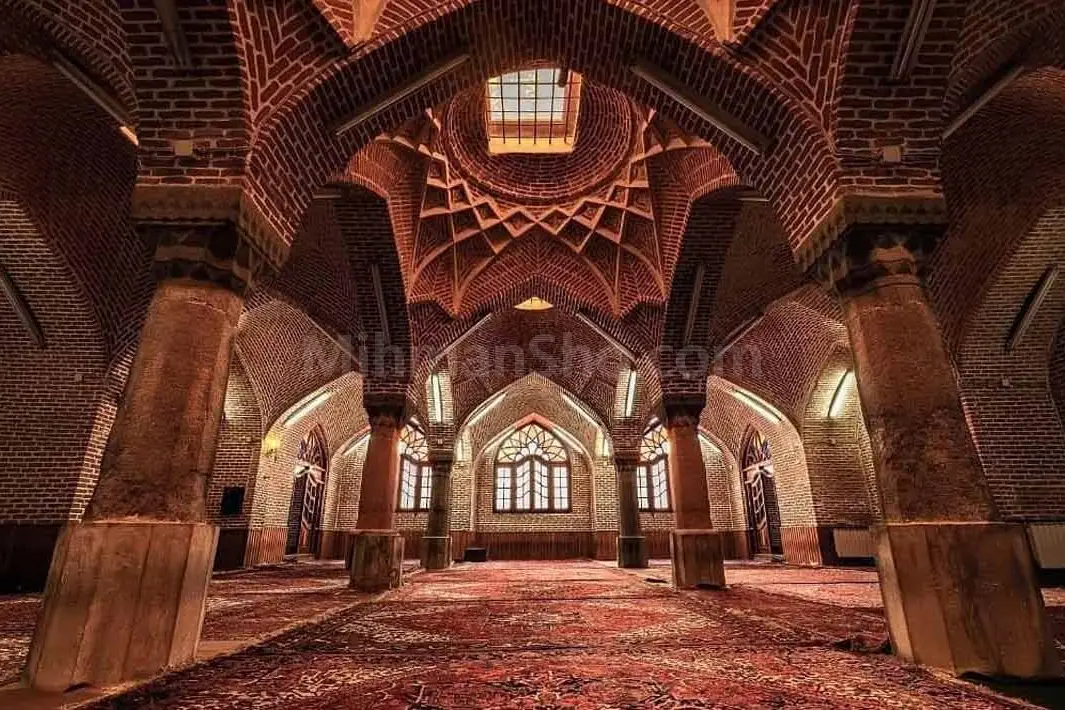When you come across a shop filled with beautiful Persian rugs, it’s not surprising if you feel unsure about how to identify a genuine one. Persian rugs are more than just carpets; they are pieces of history and culture. Knowing what to look for can help you make an informed purchase.
In this blog post, we’ll dive deeper into these tips and more, helping you confidently identify and purchase a genuine Persian rug. For more information, don’t forget to take a look at our comprehensive article: A Guide to Purchasing Persian Carpets.
Examine the Design
When identifying a genuine Persian rug, one of the first things you should examine is the design. Persian rugs come in various types, each with unique characteristics. Tabriz rugs are known for their intricate floral motifs, geometric patterns, and elaborate medallions.
These rugs are crafted from high-quality wool or silk and are highly prized for their exquisite craftsmanship. Esfahan rugs, called Isfahan rugs, feature fine weaves and elaborate arabesques, often made from wool or silk. They are celebrated for their luxurious texture and durability. Kashan rugs are another type, recognized for their classical Persian designs, intricate floral patterns, and elegant medallions. Hand-knotted with great attention to detail, these rugs are sought after by collectors.
Qum rugs, crafted in Qom, are noted for their fine silk threads and intricate designs, making them masterpieces of Persian artistry. Shiraz rugs, originating from southwestern Iran, are characterized by bold geometric patterns and vibrant colors. They are handcrafted using traditional techniques, making each rug unique. The design of a Persian rug tells a story through its motifs and compositions, reflecting the cultural heritage and emotions of the region it comes from. By carefully examining the design, you can appreciate a Persian rug’s unique beauty and authenticity.
for more detailed information about Persian rug styles, read our article: Threads of Tradition: A Comprehensive Guide to 15 Persian Rug Styles.
Check if It’s Hand-Knotted
When determining the authenticity of a Persian rug, consider whether it is hand-tufted or hand-knotted. Genuine Persian rugs are typically hand-knotted, a labor-intensive process where each strand of yarn is twisted by hand. This method results in a more durable and higher-quality rug compared to hand-tufted or machine-made rugs.
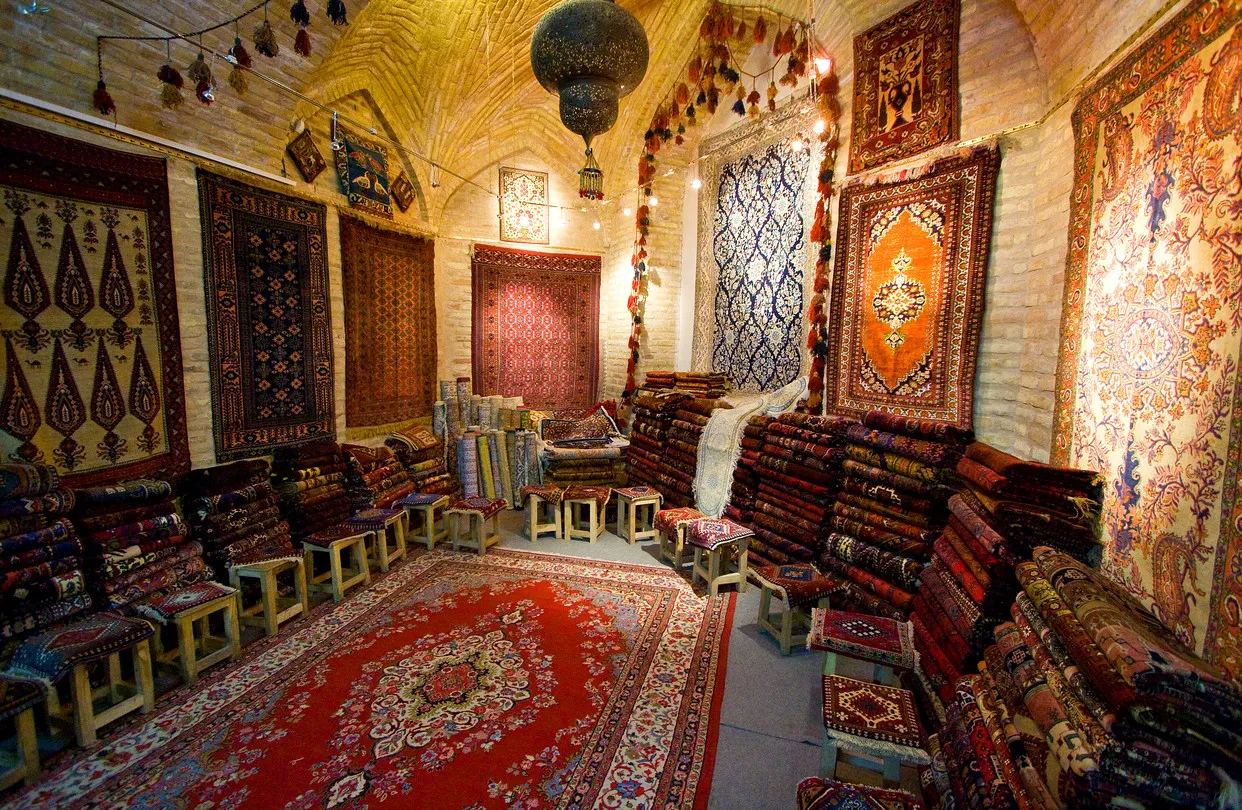
To check if a rug is hand-knotted, flip it over and look at the back. Hand-knotted rugs will show individual knots, and the pattern on the back will mirror the front. In contrast, machine-made rugs often have a mesh or plastic backing and lack the intricate knot details. These hand-tied knots and the absence of a stiff backing are strong indicators of an authentic Persian rug. Hand-knotted rugs are valued for their craftsmanship and longevity, making them a worthwhile investment.
Feel the Backing
When inspecting a Persian rug, pay close attention to the backing. Authentic Persian rugs typically have a soft foundation made of cotton or wool. This soft backing is a result of the hand-knotting process and the use of natural materials. Machine-made rugs, on the other hand, often have a stiff plastic or mesh backing, which is not found in genuine Persian rugs.
Additionally, handmade rugs will have minor imperfections on the back, which is a natural outcome of the hand-weaving process. These imperfections do not detract from the rug’s value; rather, they confirm its authenticity. A soft, flexible backing without any added stiff materials is a good indicator that you are looking at a real Persian rug.
Inspect the Knotting
The knotting technique used in a rug is crucial in determining its authenticity. Persian rugs are known for their high knot density, which indicates a finer and more detailed design. To check this, flip the rug over and examine the back. Authentic Persian rugs will have numerous tiny knots visible on the reverse side. The knots should be consistent but may show slight irregularities, which is typical of handmade rugs.
The higher the number of knots per square inch, the finer and higher the quality of the rug. Machine-made rugs, however, will have perfectly uniform knots and rows. Additionally, look for fake fringes; genuine Persian rugs have fringes that are part of the rug’s structure, not sewn on separately. The intricate knotting and natural fringes are key signs of a genuine Persian rug.
Look for a Signature
Another helpful tip in identifying a genuine Persian rug is to look for a signature. Some antique Persian rugs bear the weaver’s signature or the workshop where they were made. This can often be woven into the design, typically along the edges or within the borders.
A signature from a renowned weaver adds to the rug’s authenticity and value. While not all genuine Persian rugs will have a signature, finding one can provide valuable information about the rug’s origin and craftsmanship. It’s an additional detail that can help verify the authenticity of a Persian rug, especially if you are unsure about other factors.
Evaluate the Hem
Inspecting the hem or edging of a Persian rug can provide clues about its authenticity. The hem is typically made of cotton or wool and is tightly woven to finish the edges of the rug. In older, genuine Persian rugs, the hem will show signs of aging and wear, which can help determine the rug’s age.
A well-crafted hem indicates the rug was hand-finished with care, a characteristic of authentic Persian rugs. If the hem appears to be made of synthetic materials or is in perfect condition without any signs of wear, it might be a sign that the rug is not antique or not handmade.
Look for Signs of Wear and Tear
Finally, examining the overall condition of the rug can help you determine its authenticity and age. Genuine antique Persian rugs often show signs of wear and tear, such as fraying edges, fading colors, and worn spots. These signs of age add to the rug’s character and authenticity.
If a rug appears to be in perfect condition with no signs of aging, it is likely not an antique. Wear and tear are natural outcomes of years of use, and their presence can help confirm that a rug is genuinely old and has been crafted using traditional techniques.
When assessing wear and tear, look for natural fading of colors and worn spots that indicate genuine aging rather than uniform fading or damage that might result from artificial distressing techniques.
Check the Fringe
To identify a genuine Persian rug, examine the fringe carefully. In authentic rugs, the fringe is an extension of the rug’s foundation, created during the weaving process. This means the fringe is an integral part of the rug, not added later. Hand-knotted Persian rugs will have fringes made from wool or cotton, and they might appear shorter or more worn out on older rugs.
Machine-made rugs often have fringes that are sewn or glued on after the rug is completed. By checking where the fringe meets the rug, you can spot these fakes. If you see stitching or glue, it’s not an authentic piece.
True Persian rugs have fringes that seamlessly extend from the rug’s body, showcasing a continuous weaving technique without any additional attachments. This detail signifies authenticity and reflects the skill and tradition of Persian rug making.
If you’re considering having a Persian rug, but you’re unsure about how to identify genuine rugs, reach out via the chat icon at the bottom right of the page or email us at [email protected].
See If It’s Colorfast
Authentic Persian rugs use natural dyes derived from plants, minerals, and insects, which are known for their vibrant and lasting colors. These dyes do not bleed into each other or fade over time.
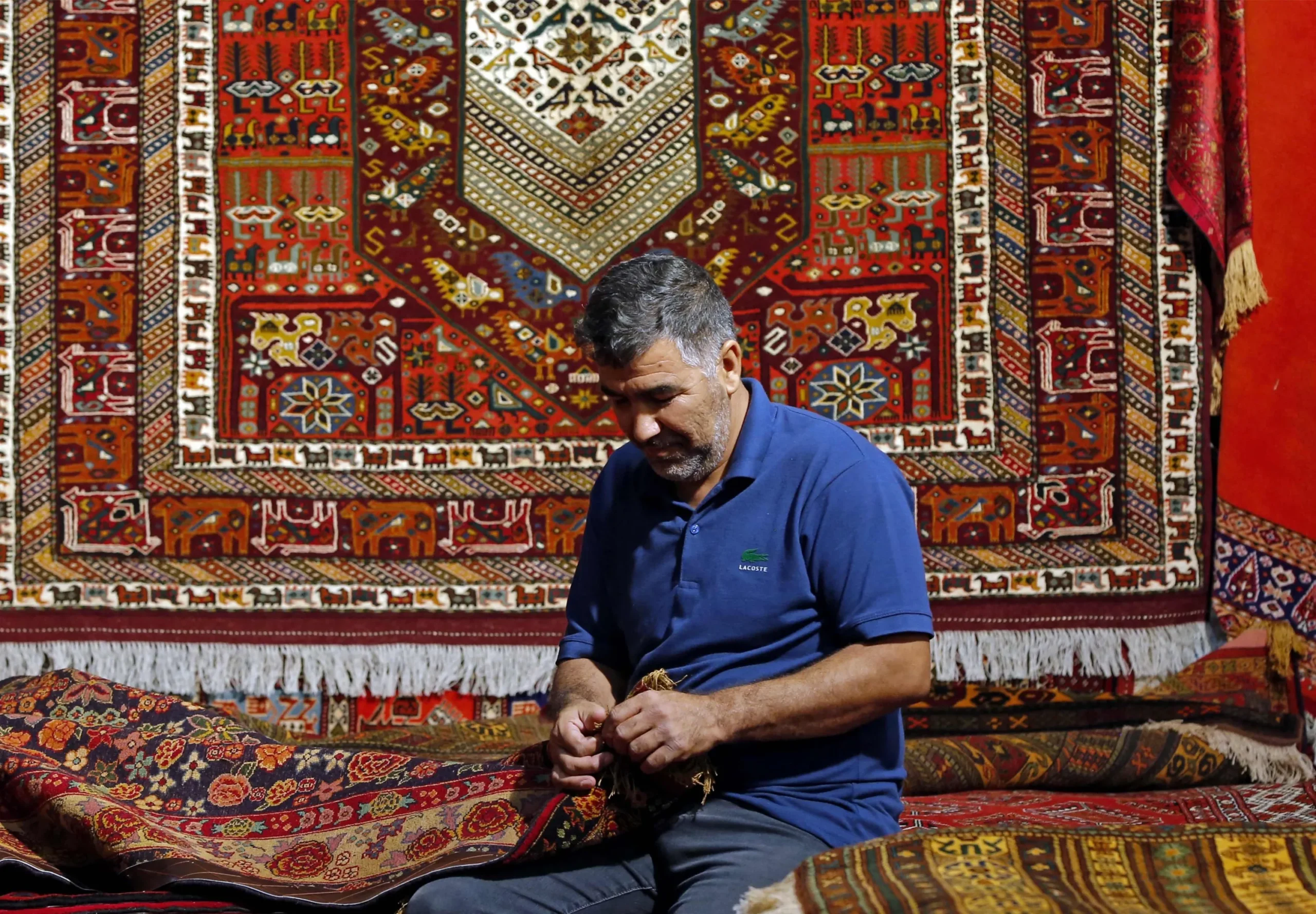
To check if a rug is colorfast, you can perform a simple test. Dampen a white cloth and press it against a small, inconspicuous part of the rug. Leave it there for a few hours. The colors will not transfer to the cloth if the rug is authentic. If you see color on the cloth, the rug likely uses synthetic dyes, indicating it’s not a genuine Persian rug.
This test is crucial as authentic Persian rugs maintain their hues through natural dyes that adhere well to the fibers, while fakes with synthetic dyes tend to bleed and fade.
Inspect the Material
Real Persian rugs are made from natural fibers, like wool, cotton, and silk. Wool is the most commonly used material, known for its durability and warmth. Silk adds a luxurious texture and sheen, making the rug more expensive. Cotton is often used in the rug’s foundation. These natural materials contribute to the rug’s longevity, comfort, and appearance.
Synthetic materials like polyester, nylon, or polypropylene, commonly found in fake rugs, lack the durability and feel of natural fibers. They also pose environmental concerns due to their flammability. When examining a rug, feel its texture and look for the softness and quality that natural fibers provide. Rugs made from synthetic materials, even if marketed as Persian, are not genuine and won’t offer the same benefits or longevity.
Identify the Rug’s Origin
Each Persian rug is unique and often named after the place where it was made, reflecting the diverse craftsmanship of Iran. This naming convention helps identify genuine rugs. For example, a Qashqai rug is made by the Qashqai tribe, while a Qom rug comes from the city of Qom.
These names are more than just labels; they represent different regions and communities’ distinct styles, patterns, and weaving techniques. Knowing the origin of a rug can give you insights into its design and authenticity. Genuine Persian rugs carry the cultural and artistic heritage of their makers, making them unique and valuable.
When buying a rug, understanding its background and the region it comes from can help confirm its authenticity and enhance your appreciation of its beauty and craftsmanship.
Look for Uniqueness
Every hand-knotted Persian rug is a one-of-a-kind creation. The weaver’s personal touch and interpretation mean that no two rugs are exactly alike, even if they follow the same pattern. This uniqueness is a hallmark of authenticity. Machine-made rugs, on the other hand, are produced in large quantities with identical designs.
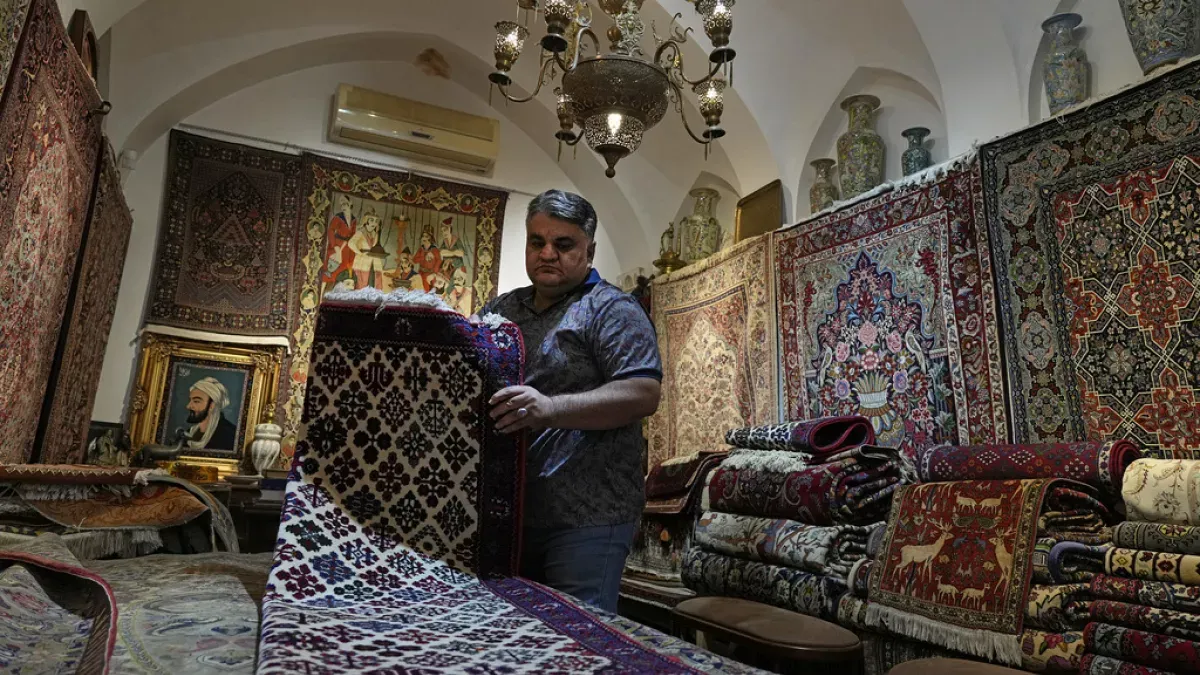
If you find a rug available in multiple sizes or quantities, it’s likely machine-made. Genuine Persian rugs often have subtle variations and irregularities, which are signs of hand craftsmanship. These unique characteristics make each rug a distinct piece of art, reflecting the weaver’s skills and creativity. When you buy a genuine Persian rug, you acquire something truly unique, not just a mass-produced item.
Check for Symmetry
Handmade Persian rugs are rarely perfectly symmetrical. While the designs may appear balanced, close inspection will reveal minor irregularities and imperfections. This is because each knot is tied by hand, and no two knots are exactly the same.
These slight asymmetries add to the charm and authenticity of the rug. In contrast, machine-made rugs are perfectly symmetrical, with designs mirrored exactly. If you notice a rug is flawlessly symmetrical, it is likely machine-made. Genuine Persian rugs reflect the human touch in their creation, making them more valuable and authentic. Embrace these imperfections as a testament to the artisan’s skill and the traditional methods used in crafting these beautiful rugs.
Evaluate Pile Thickness
The thickness of a Persian rug, or its pile height, can indicate its quality and authenticity. High-quality hand-knotted Persian rugs are usually thinner, with a pile height of 3 to 6 mm. Creating a thin and flat rug requires great skill and experience, as it involves tightly packing numerous knots. Thicker rugs are often less valuable and may not be genuine. Examine the rug’s pile height and the density of the knots.
A thinner, densely knotted rug is likely of higher quality and authenticity. These rugs showcase the weaver’s expertise and offer better durability and finer details in their patterns. When assessing a Persian rug, consider its pile thickness as a key factor in determining its authenticity and quality.
Things to Look for When Buying a Persian Rug
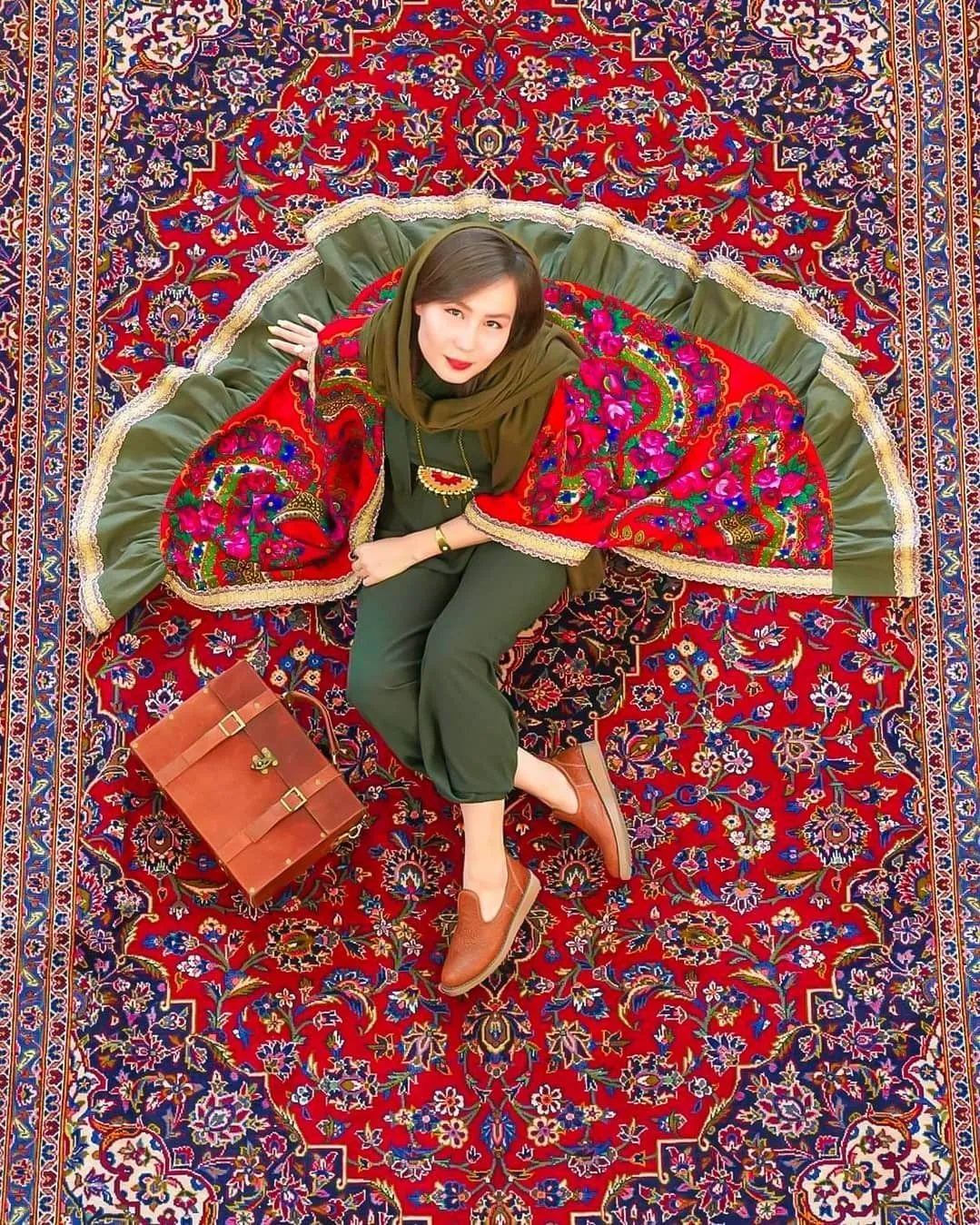
When you’re buying a Persian rug, there are a few key things to consider to ensure it’s genuine. First, does the vendor know about Persian rugs? They should be familiar with the history of the rug and Persian rugs in general. Make sure the vendor allows you to check the rug closely and can explain all the technical details that indicate it’s genuine.
They should be able to answer all your questions about the rug, including what type and size might be best for your home. Transparency about the rug’s origin is crucial. Look for a product label that describes the rug as genuine, authentic, hand-woven, or hand-knotted. It should mention the materials used and the specific region of Iran where the rug was made.
How Much Does a Persian Rug Cost?
A genuine Persian rug is not cheap. If you’re looking for a bargain, a Persian rug might not be for you. The price of a Persian rug reflects its quality and worth. Factors such as the rug’s age, the weave, knots per inch, materials used, time taken to make the rug, and its rarity all influence the price. While you may pay more for a genuine Persian rug, it will outlast any synthetic rug and can be enjoyed by future generations.
Consult With an Expert
If you’re still unsure about the authenticity of a Persian rug, consult an expert. Experts who specialize in antique Persian rugs can provide a more accurate assessment. Considering all these factors when identifying antique Persian rugs can help you find valuable pieces that add beauty and history to your home.
If you’re visiting Iran and looking to buy Persian rugs, we offer personalized consultations to help you find the best deals. If you want to purchase a Persian rug from the comfort of your home, we provide online support and consultations—reach out via the chat icon at the bottom right of the page or email us at [email protected].

